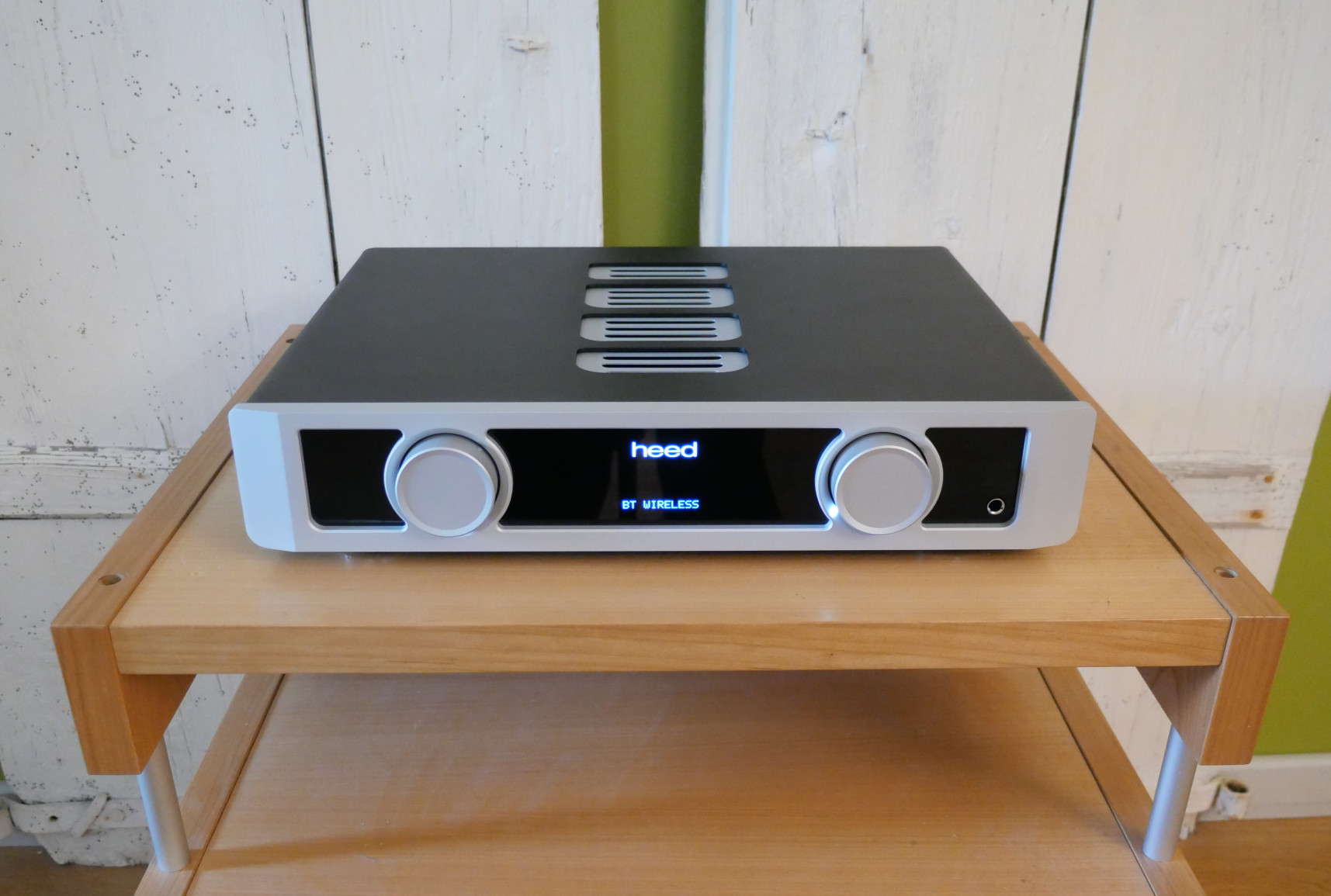A small, IR remote offers control of both the Lagrange and compatible CD players/transports from Heed or other sources. For once, it’s clearly laid out and a joy to use, with volume, source select and mute functions occupying the top two rows of buttons. Volume level is permanently indicated by a peripheral LED that shifts around the control knob. Press the input button once and the display illuminates to show the unit’s current status. Press it again and it cycles through the inputs with the display clearly identifying each in turn. Once you’ve selected the chosen input the display switches off. That doesn’t just help with sonic and musical performance, it stops the amp looking like a Christmas tree. It’s a model; of simple clarity and ease of use.

Under the hood, this amplifier is just as impressive. Not to be confused with any number of the multi-function, Class D-based amplifiers on the market, the Lagrange uses a pukka Class AB output stage fed by a beefy power-supply – hence the surprising weight. The circuit itself is far from ordinary too, using bi-polar transistors in a distinctive TransCap output configuration, a topology that aims (like so many others) to combine the musical benefits of tube and solid-state devices. Delivering a healthy and surprisingly load-tolerant 60Watts per channel (8Ω, 100 W/Ch into 4Ω), this is anything but a ‘me too’ amplifier. Nor is it essentially compromised in order to fit its functionality inside a compact chassis. In fact, it’s quite the opposite. Heed may not be a familiar name to many of the hi-fi buying public, but it’s a company with considerable heritage, a long history and distinctive DNA.
In the 1970s, after experience working at Radford Electronics (who manufactured the legendary Radford valve amplifiers) Richard Hay set up Nytronics to manufacture compact, solid-state designs under the Nytech name. The company evolved into Ion Systems and ultimately, creative differences with his then business partner led to Hay’s departure in the late ‘80s.
Meanwhile, Heed Audio had been importing high value equipment from the likes of Rega, NAD, Ackroyd and Ion Systems into their home market in Hungary. Import restrictions 9and cost structures) created a situation in which many products, including the Ion Systems amplifiers, were imported in kit form and assembled in-country. When Ion Systems eventually folded in 1992, Heed not only took the opportunity to acquire parts from the company sale, they decided to continue development under the Heed banner. The close relationship between Heed’s owners and Richard Hay, resulted in a rekindling of the relationship (on a friendly, consultancy basis) and, 50-years on, Nytech’s original design ethos is alive and kicking. Look at Heed’s website and you’ll soon realise that the company has stayed true to the narrow, shoe-box proportions established by the original Nytech CTA 252, evolving a complete series of excellent, highly regarded and high-value, compact, modular, minimalist electronics. In that regard, the Lagrange is a departure, but interestingly, where most manufacturers who produce separates end up creating an integrated that crams multiple circuit blocks into something smaller than their standard amplifier chassis, Heed has gone the opposite way. Despite its compact footprint, the Lagrange is actually almost twice the size of its stable-mates.

